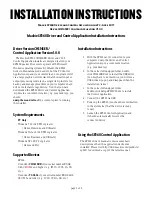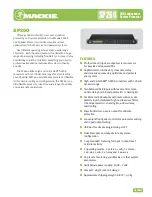
66
•
Using the DAS-1700 Series with DriverLINX
Keithley DAS-1700 Series
Analog Output Timing Events
Timing Events specify how the hardware paces or clocks the writing of analog output
samples. DriverLINX uses the Timing Event to program when the DAS-1700 Series
writes the next analog output sample.
The DAS-1700 Series supports the following Timing Events:
•
None—Task requires no pacing as DriverLINX is writing only a single
value or scan.
•
Rate—The DAS-1700 Series supports fixed rate writing using internal
and external clocks. You can also synchronize an Analog Output task
with an Analog Input task using a Rate Event. See “Rate Generator:
Internal Clocking” on page 67 or “Rate Generator: External Clocking”
on page 69.
•
Digital—DriverLINX uses an external digital output signal to pace the
timing of the next sample.
None or Null Timing Event
The Null Event specifies that the task does not need a clock to determine when to
write the next sample.
Rate Timing Event
The DAS-1700 Series supports one type of Rate Event for analog output:
•
Rate Generator—Generates a fixed rate clock with equal time
intervals between tics.
DAS-1700 boards have a 5 MHz master clock frequency, or 0.2
µ
s tic period. The
sample period can range from 20 tics (2
µ
s) to
)
1
2
(
10
16
−
×
tics (0.131 s). This means
the sample rate can range from 7.63 Hz to 250 kHz.
StockCheck.com
















































